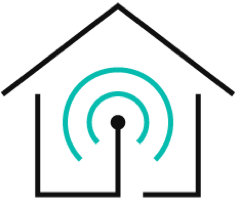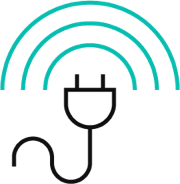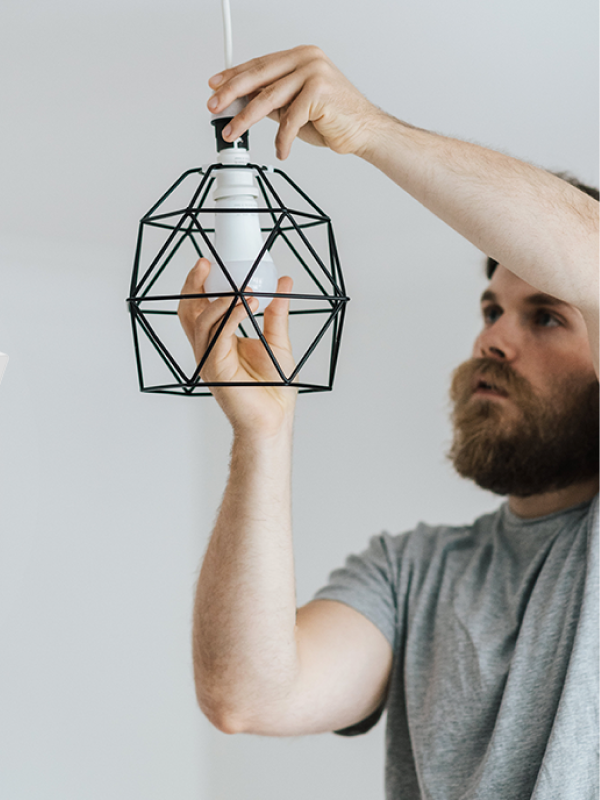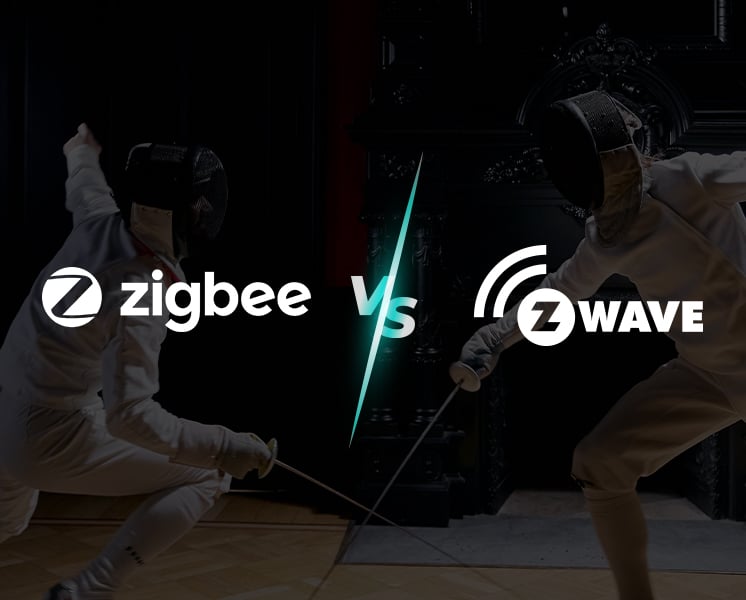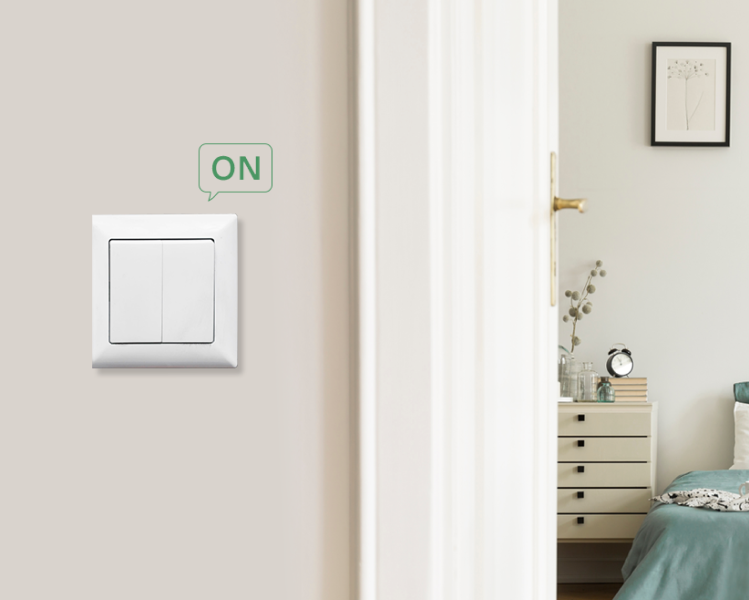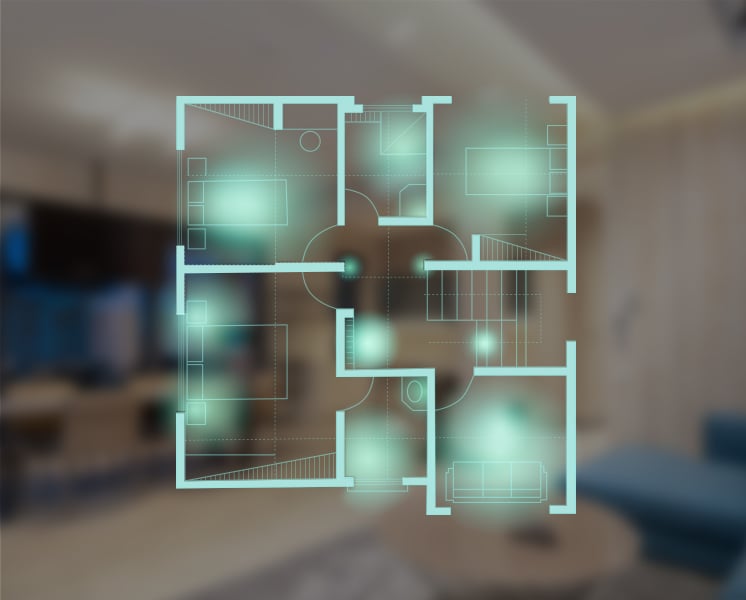The time when old homeowners used to stay away from smart devices due to the vast amperage of wiring that comes with them has long gone. Nowadays, several types of smart in-wall relay and ZigBee light switches are available in the market that features a no-neutral-wire system. This means you don't have to upgrade any part of your home for their installation. Install them in an existing fixture, and have complete control over your home's lighting from far away.
Moreover, they don't have a specific load requirement, preventing you from flickering lights and the risk of getting electrocuted. Although multiple brands are introducing a ZigBee light switch, EVVR takes the lead with its exceptional EVVR In-Wall Relay Switch Lite. This switch is affordable, easy to install, and a perfect home automation solution. However, to get the best out of this EVVR ZigBee light switch, you must understand its operation, installation, applications, and more. So, let's dig further!
- What is EVVR In-Wall Relay Switch Lite?
- How Does EVVR In-Wall Relay Switch Lite Work?
- How to Wire EVVR In-Wall Relay Switch Lite?
- Applications of the EVVR In-Wall Relay Switch Lite
- Compatibility of EVVR In-Wall Relay Switch Lite with Other Hubs
- Difference Between In-Wall Relay Switch Lite and In-Wall Relay Switch
- Why Choose EVVR In-Wall Relay Switch Lite?
What is EVVR In-Wall Relay Switch Lite?
The EVVR in-wall relay switch lite is a ZigBee smart light-controlling product that doesn't require a neutral wire and is a perfect smart lighting solution. It works perfectly with all types of bulbs, such as incandescent, halogen, etc., and even the most energy-efficient ones, like LED bulbs. Additionally, this smart switch comes in minimal yet sturdy packaging and is made of durable plastic that neither bends nor flexes.
There's an LED button that tells the connectivity status of the switch, a reset button, a mounting hole, etc., which helps you set up the device swiftly. This smart relay switch is the smallest switch, 6cm × 4cm × 2cm. So, you can easily hide it around the lamp or light you will control with it without compromising on the aesthetics of your home. What's the best part? You don't have to worry about electricity leakages and bulb loss due to continuous flickering with this ZigBee light switch.
>> What is Zigbee? Details to build your smart home
How Does EVVR In-Wall Relay Switch Lite Work?
There's little difference in the working of an EVVR in-wall relay switch and an EVVR in-wall relay switch lite. Both work on the same principle, which is the electromagnetic mechanism. Need to know what it is? The Evvr in-wall relay switch lite has a magnet inside that turns it on and off. When current flows through the switch, the magnet attracts the iron armature, pushing the other end together.
This results in complete circuit formation and current flows throughout the circuit, which turns your EVVR in-wall relay switch lite on.
Another noticeable thing is that even if your ZigBee light switch is off, the current will flow through it, and you can control the switch through the ZigBee hub. What more? You don't need extra wires to install this switch and make it work. Therefore, this EVVR ZigBee light switch gained huge popularity among people having homes built in the 80s or 90s.
After the internal working of a ZigBee light switch, let's discuss the operational working of the Evvr in-wall relay switch lite.
Operational Working
Here's the step-by-step procedure:
- First, open any ZigBee-compatible app on your phone and scan the QR code on the switch to add the device to the app. You can also add the device type and name it manually in the app.
- Next, turn on the ZigBee hub by pressing the reset button and make sure its load light is on. Wait for at least 30 seconds until the pairing indicator on the ZigBee light switch starts to blink blue.
- The hub will automatically detect the device next time and connect to it within no time.
How to Ensure Your EVVR In-Wall Relay Switch Lite is Working Smoothly?
Like the EVVR in-wall relay switch, the EVVR in-wall relay ZigBee switch lite must also be installed near the hub to ensure no signals drop out. Don't know how to check if the ZigBee hub is connected to the switch? If the LED indicator on the controller is showing a blue color, it means the connectivity is smooth. However, if the indicator has a red light, it shows the hub isn't connected to the switch; thus, the relay controller will not work.
How to Switch Between Different Switching Modes in the Evvr In-Wall Relay Switch Lite?
The process of going towards different switching modes in the ZigBee light switch resembles the EVVR Homekit in-wall relay switch. You can get a better idea about it from the table given below:
|
Switch |
Indicator |
|
Toggle switch - the device changes its status when the smart switch panel or switch changes its status |
The indicator blinks purple light once |
|
Toggle switch - the device is on when the contacts are closed and off when contacts are opened |
The indicator blinks purple light twice |
|
Momentary Switch |
The indicator blinks purple light thrice |
How to Wire EVVR In-Wall Relay Switch Lite?
Compared to a simple EVVR in-wall relay switch, this relay switch lite is easier to install due to its smallest switch size. It's a two-part device: a smart switch panel and a smart relay lite. The smart switch panel is an optional accessory, but it's good to install it if you want to give your ZigBee light switch network commands even when it's off. Let's look at a step-by-step guide on how to wire or install a ZigBee light controller.

Step 1
The first step is to turn off the circuit breaker for the switch so no current flows while you are wiring the new EVVR in-wall relay switch lite. Doing so saves you from electrical leakages and potential risks of getting electrocuted.
Step 2
Now it's time to install the smart switch panel in your ½ gang switch. For this purpose, take out the cover of the nearby fixture. Detach two wires from that fixture, connect the live wire to the L connector, and load the wire to the L1 connector. Slip in the panel in your switch and go towards the next step.
Step 3
The next step is installing the smart ZigBee light relay switch. Remove the cover of the same fixture near your bulb or lamp, and remove the wires connecting the switch to the bulb. After that, connect the neutral wire to the N terminal, and the output Live wire to the L Out 1 connector.
Step 4
Push all the wires and the relay lite back into the fixture and cover it up with the plastic case you previously removed. Lastly, turn the power back on and wait for a few seconds until the switch starts working.
Applications of the EVVR In-Wall Relay Switch Lite
The applications of the EVVR smart relay switch are the same as that of the EVVR simple relay switch. Other than opening ways for lighting automation, you can utilize this smallest switch to control other home devices or appliances. The most common are smart security systems, smart doorbells, innovative kitchen appliances, etc.
Compatibility of EVVR In-Wall Relay Switch Lite with Other Hubs
The EVVR in-wall relay switch lite is an excellent product for people who don't have a ZigBee hub and want the device to connect to any other available hub. EVVR In-Wall Relay Switch Lite is compatible with standard Zigbee 3.0 smart home hubs, SmartThings, Amazon Echo, Aeotec, SONOFF, eWelink, and other third-party hubs.
The most suitable alternative is Z-Wave as it has a better range and the signal doesn't drop even if you live in a huge villa. Moreover, Z-Wave runs on a different spectrum, so your home's WiFi connection won't affect its connectivity with your switch. As Z-Wave has more companies signed up, you can explore more options and get the maximum out of your light switch.
Difference Between In-Wall Relay Switch Lite and In-Wall Relay Switch
As mentioned earlier, there's not much difference between In-Wall Relay Switch Lite and In-Wall Relay Switch. A few noticeable differences are in compatibility, the In-Wall Relay Switch Lite works with ZigBee 3.0, SONOFF, Amazon Echo, SmartThings, etc.
Compared to In-Wall Relay Switch, the In-Wall Relay Switch Lite shares the same features that it supports all kinds of light bulbs with no workload limitation. At the same time, In-Wall Relay Switch Lite is a more economical solution with which a single/dual/three-gang rebound switch included.
However, the installation process doesn't vary much, and you will follow the same steps you performed during the wiring of the EVVR in-wall relay switch. With In-Wall Relay Switch Lite, you need to connect it to a ZigBee or any third-party hub while the In-Wall Relay Switch efficiently connects with Homekit.
|
|
EVVR In-Wall Relay Switch |
EVVR In-Wall Relay Switch Lite |
|
Protocol Types |
Zigbee, Zwave, HomeKit |
Zigbee, Zwave, HomeKit |
|
Communication Range |
30-80m |
30-80m |
|
Load Power |
300-600W |
1500-3000W |
|
Operating Voltage |
85-245VAC |
85-245VAC |
|
Panel Type Supported |
Toggle switch, momentary switch, microswitch |
EVVR smart panel(SS02) |
|
Panel Module Supported |
SS01 |
SS02(SS01 optional) |
|
Device Size |
59.4X39.3X21.2mm (2.34X1.55X0.83in) |
47.4x39.3x21.2mm (1.87X1.55X0.83in) |
|
Compatibility With Third-Party Gateways |
Home Assistant, Homey, SmartThings, Philips HUE, HomePod, Alexa Echo, Control 4, etc. |
Home Assistant, Homey, SmartThings, Philips HUE, HomePod, Alexa Echo, Control 4, etc. |
|
Certification |
CE, FCC, ROHS., HomeKit, etc. |
CE, FCC, ROHS, HomeKit, etc. |
Why Choose EVVR In-Wall Relay Switch Lite?
The EVVR ZigBee light switch or the EVVR in-wall relay switch lite has many benefits that make it a superior choice over other brands of the same category. Don't know what these are? Let's look at a few!
Supports Hard-Wired 3 and 4-Way Controls
With ZigBee smart switches, you can control around 3 to 4 hard-wired controls with your existing wall switches. What's the best part? The load limit for each switch gauge is 16A which is enormous, and not all switches offer this.
Extensive Flexibility
This smallest switch has a patented pending split design that makes the switch more flexible and reliable. You can simultaneously control the same switch through a network connection and mechanical panel. It also allows you to create different fixtures for the same lighting system to make the adjustment easier.
No Neutral Wire Required
Like the In-Wall Relay Switch, this EVVR ZigBee light switch doesn't require a neutral wire for its installation. You can wire it to the existing switch without disrupting any existing part of the building. So, for structures built in the 90s, this ZigBee light switch is a way for light automation.
Conclusion
The EVVR in-wall relay switch lite or the ZigBee light switch is perfect for old homes that want something small to blend in their surroundings secretly. This switch has two parts, and the installation process is straightforward if you follow the steps mentioned above accurately. It has excellent features like no neutral wire required, offers extensive flexibility, and doesn't require a minimum load. So, if you are looking for a perfect home automation solution, get your EVVR ZigBee light switch lite from us and become our partner now!

